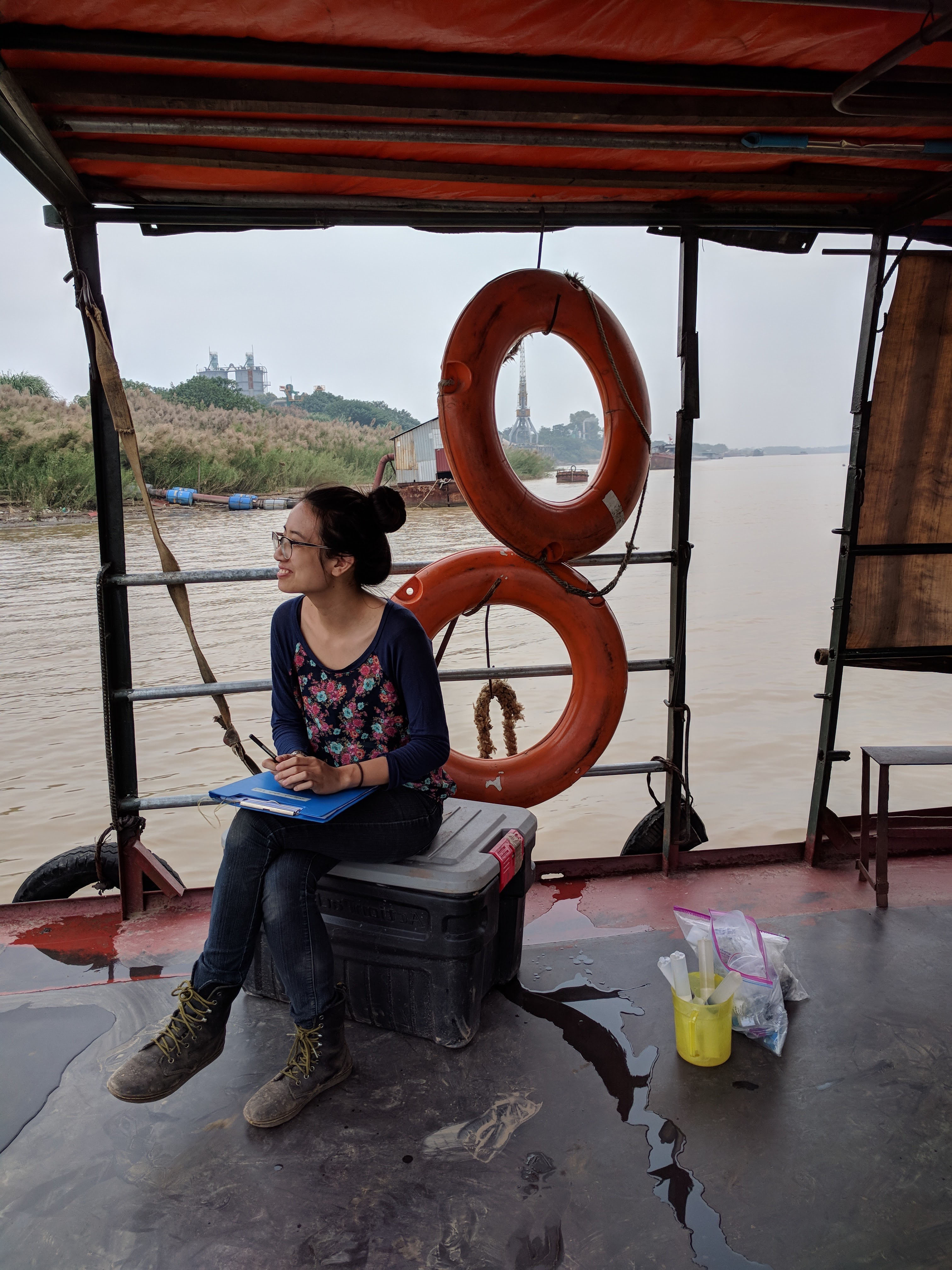Arsenic in groundwater
Release of arsenic into groundwater, above World Health Organization guidelines of 10 µg/L, has adverse health effects for millions of people who rely on groundwater for drinking water.
I investigate factors that affect arsenic release and factors that promote in-situ arsenic sequestration from different approaches including lab-based experiments, field work, aqueous measurements and synchrotron-based X-ray absorption spectroscopy to characterize and quantify redox processes.
Contamination of groundwater by toxic arsenic is pervasive across South and Southeast Asia, yet the iron mineralogy associated with and often responsible for the release of arsenic remains poorly investigated. I used statistical methods such as hierarchical cluster analysis on an extensive data set of X-ray absorption spectroscopy measurements to reveal signatures of iron mineral reduction that could lead to future arsenic release. I also showed that the extent of previously pristine aquifers that have been contaminated may have been misclassified and thus underrepresented (Nghiem et al. 2020).

From a regional survey in the Red River Delta, Vietnam, I used an ensemble approach to an end-member mixing model and quantified fraction of different recharge sources into an aquifer based on stable water isotopes. These fraction of recharge sources can then be statistically compared to geochemical parameters, showing that aquifers with high riverine recharge have high dissolved arsenic concentrations without high dissolved organic carbon (Nghiem et al. 2019).

With Prof. Henning Prommer at Commonwealth Scientific and Industrial Research Organisation (CSIRO) & University of Western Australia, I developed a biogeochemical reaction network and reactive transport model to simulate the infiltration of arsenic-contaminated water into uncontaminated aquifers. We found that uncontaminated and presumably safe-guarded aquifers, which contain abundant oxidized Fe minerals, may be contaminated with arsenic more quickly than expected due to sulfur processes and the formation of highly mobile thiolated arsenic species (Nghiem et al. 2023).
pictured: a sunny day at Rottnest Island, Western Australia during a research visit to CSIRO
